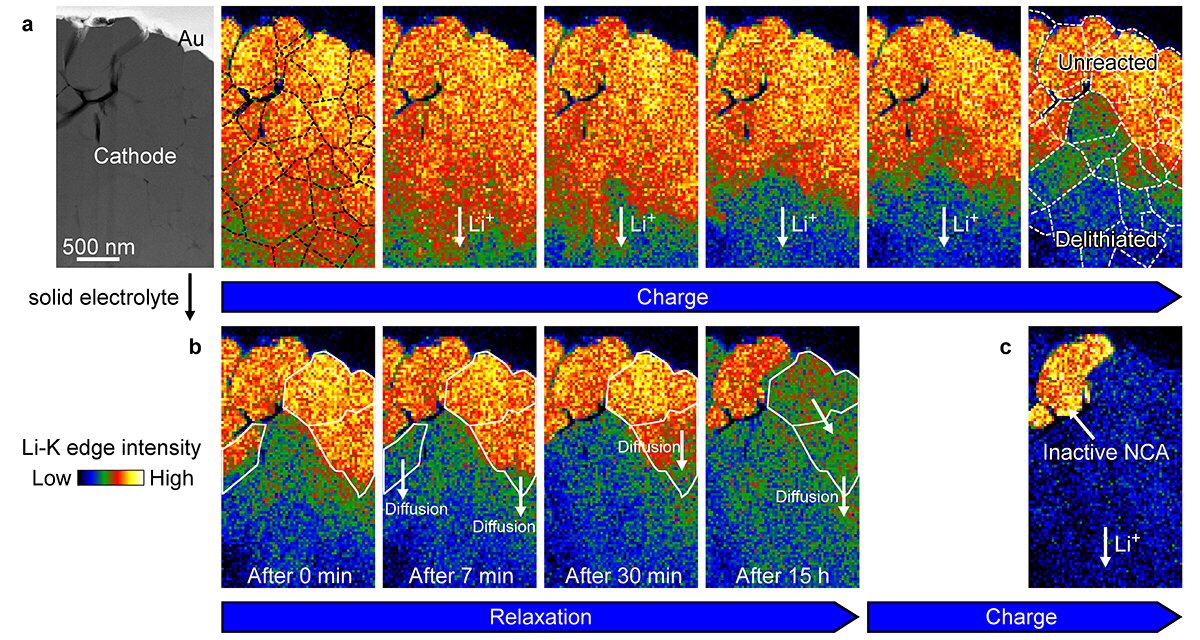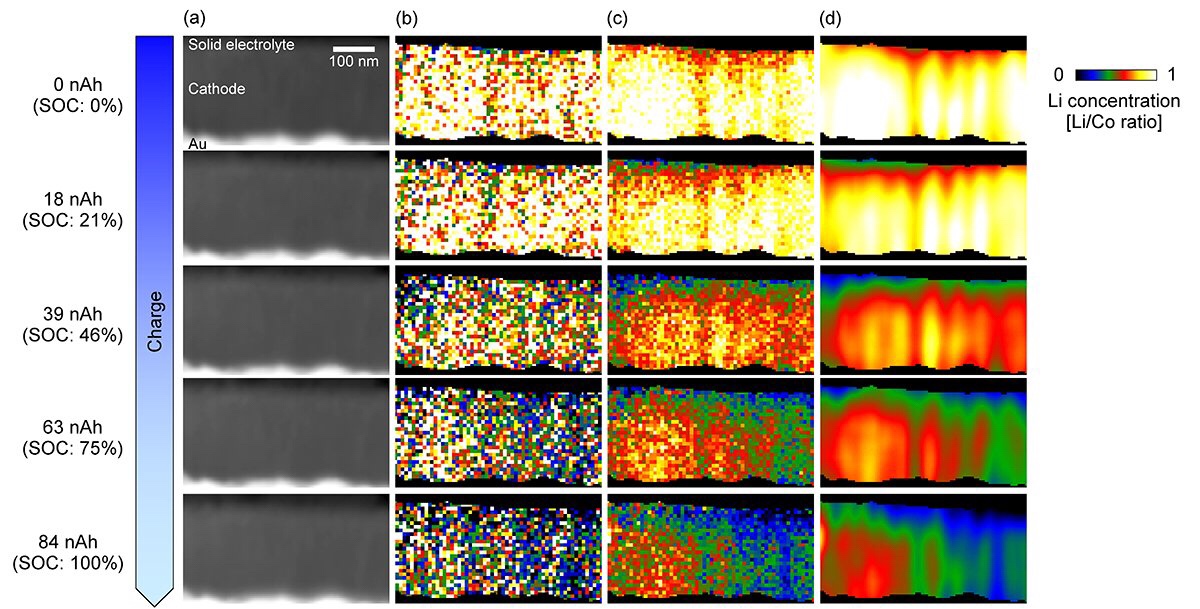
Fig. 1: Real-time observation of lithium ions in cathode materials of the bulk-type all-solid-state batteries.
(a) STEM image and corresponding lithium maps showing the lithium dynamics during high-speed charging. The black and white broken lines indicate the crystal grain boundaries of primary cathode particles.
(b) Relaxed distribution of lithium following the high-speed charging.
(c) Lithium distribution following low-speed charging. (Figures have been partially modified and reproduced with permission from the below-mentioned article *a. Copyright 2020 American Chemical Society.)

Fig. 2: Real-time observation of lithium ions in thin-film-type all-solid-state batteries.
(a) (in column) STEM images.
(b) Noisy, low-resolution images showing lithium distribution, recorded at a high scanning speed condition.
(c) Images calculated from (b) using spectral fitting, showing lithium distribution with noise reduction.
(d) Images from (c) using sparse coding, showing super-resolved lithium distribution without noise.
(Figures have been partially modified and reproduced from the below-mentioned article *b. Copyright 2020 Springer Nature.)
松下:可视化的锂离子运动:所有固态电池的充电/放电
-启用薄膜类型和体型分析-
松下:
名古屋大学未来材料与系统实验室精细陶瓷中心(JFCC)
我们共同开发了一种技术,能够以纳米分辨率实时观察全固态电池在充电/放电过程中锂离子的运动。
通过透射电子显微镜和机器学习实时观察。
全固态锂离子电池:
它可以实现高安全性和能量密度,并有望用作下一代二次电池。
将来,为了开发出性能更高的电池,有必要准确地了解锂离子在电池内部的运动。
操作数透射电子显微镜分析技术:
到目前为止,松下,JFCC和名古屋大学共同开发了“操作数透射电子显微镜分析技术”,该技术可以可视化薄膜全固态电池中锂离子的运动。
适用于大容量型全固态电池:
这次,我们将此技术应用于大容量全固态电池。
同时,大大缩短了图像拍摄时间。
以前,每个图像花费15分钟,但是减少到30秒。
结果,对于薄膜型和大容量型全固态电池,
锂离子在内部流动的运动
在纳米的空间分辨率下,
实时观察成为可能。
开发技术:
由此可知,锂离子在复杂的扩散过程中被充放电。
如果利用这项研究结果,
可以设计低内阻的电池,
据说可以实现高性能的全固态电池。
EE Times日本
https://eetimes.jp/ee/spv/2007/14/news035.html
Panasonic Announces Development of Real Time Observation Technique to Reveal Lithium-Ion Dynamics During Charge and Discharge in All-Solid-State Batteries |
Osaka, Japan – On July 9, 2020,
Panasonic Corporation
announced development of technique to visualize lithium-ion dynamics in all-solid-state batteries on a nanometer scale in real time, in collaboration with
Japan Fine Ceramics Center (JFCC) and Institute of Materials and Systems for Sustainability,
Nagoya University.
The technique, which makes use of scanning transmission electron microscopy (STEM) and machine learning, was applied to both bulk-type and thin-film-type all-solid-state lithium ion batteries.
This technique
has enabled the visualization of lithium ion transfer resistance, which has revealed that the lithium ions are charged and discharged with complex diffusion processes,
and their movements
are disturbed at crystal grain boundaries within cathode materials. These findings clarified the criteria for designing high-performance all-solid-state batteries, and will therefore make huge contributions to their future development.
These research results
were published in the online version of ACS Energy Letters (May 27, 2020) and the online version of Nature Communications (June 4, 2020).
Both studies were partially supported by a Grant-in-Aid for Scientific Research KAKENHI (JP17H02792) from the Japan Society for the Promotion of Science (JSPS).
Panasonic Newsroom Global grain boundaries within cathode materials. These findings clarified the criteria for designing high-performance all-solid-state batteries, and will therefore make huge contributions to their future development.
Panasonic Newsroom Global